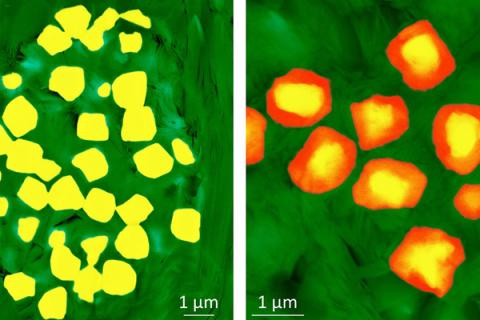
Pyrite, or fool’s gold, is a common mineral that reacts quickly with oxygen when exposed to water or air, such as during mining operations, and can lead to acid mine drainage. Little is known, however, about the oxidation of pyrite in unmined rock deep underground.
A new, multi-scale approach to studying pyrite oxidation deep underground suggests that fracturing and erosion at the surface set the pace of oxidation, which, when it occurs slowly, avoids runaway acidity and instead leaves behind iron oxide “fossils.”
Read the Full News Story

